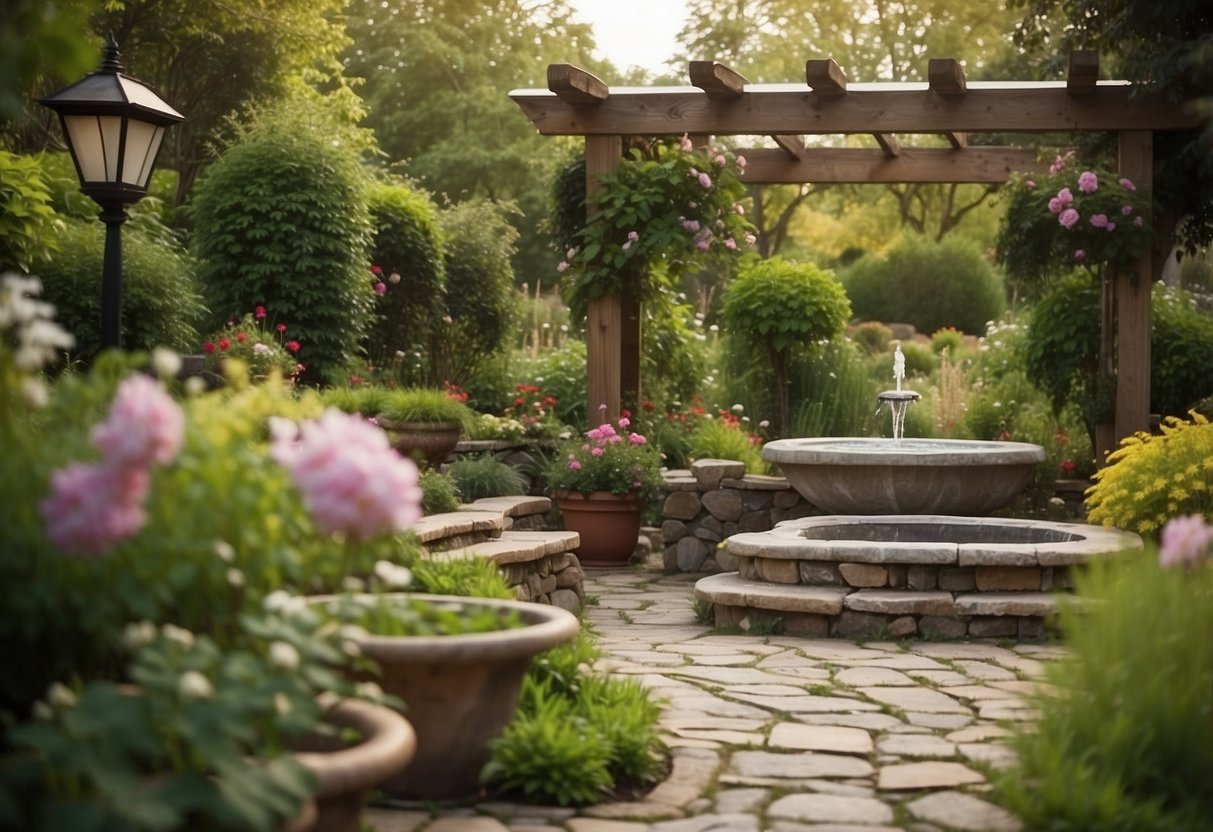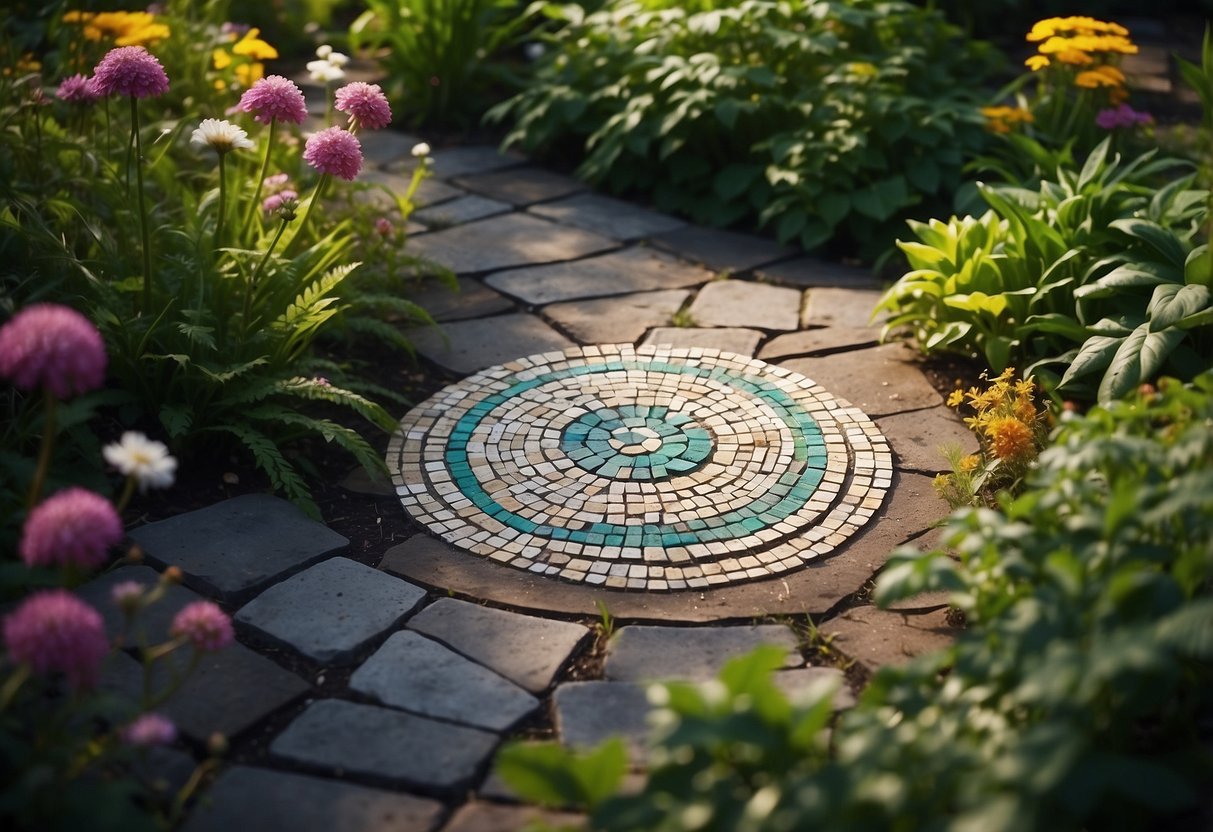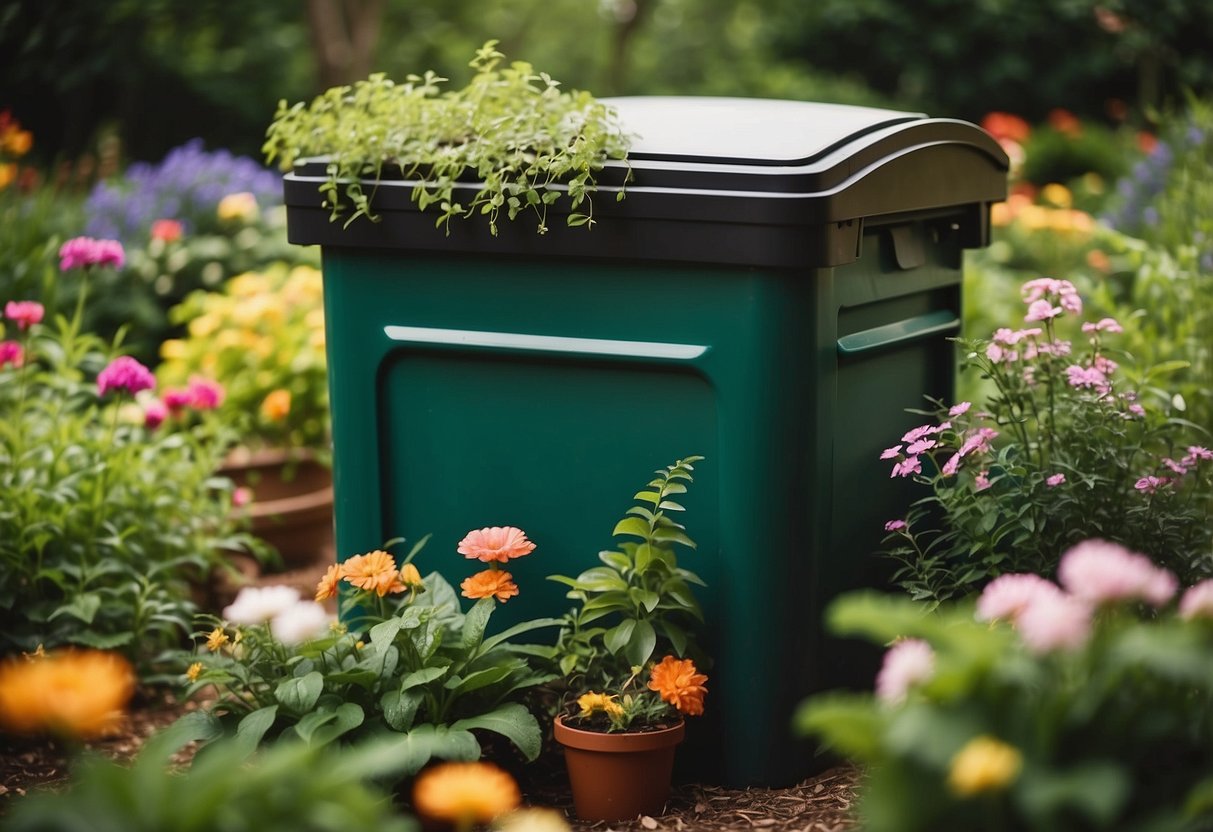Garden Side Yard Ideas: Creative Strategies for Small Spaces
Transforming your side yard can add beauty and functionality to your home. This often-overlooked space can become a vibrant part of your outdoor environment with just a bit of creativity and planning. What can you do with this narrow strip of land to make it truly shine?

Whether you want a cozy retreat or a practical extension of your garden, there’s a range of options to consider. From simple landscaping tweaks to more elaborate structures, enhancing your side yard can make your entire yard feel more unified and useful. Get ready to unlock the potential of your side yard and enjoy a new dimension of your outdoor living space.
1) Outdoor Seating Area

Creating an outdoor seating area in your side yard is a fantastic way to make use of the space.
A shaded L-shaped sofa can turn a usually unused corner into a cozy seating nook.
Adding elements like small garden benches or colorful deck chairs can help make the area more inviting.
Consider placing potted plants around the seating area to add a touch of greenery and serenity.
2) Vertical garden

A vertical garden is a great way to make use of limited space in your side yard. This type of garden involves growing plants upward using structures like trellises, hanging planters, or even a wooden pallet for a simple DIY project.
You can use this method to grow herbs, flowers, or trailing plants. For a unique touch, try making a strawberry tower using leftover materials.
Adding planters to a wall or fence can also change the look of your space while providing additional room for gardening. It’s perfect for small spaces where traditional gardening is tricky.
3) Herb Spiral

An herb spiral is a clever way to grow different kinds of herbs in a small, vertical space. This structure uses stones or bricks to create a spiral shape, which helps maximize the growing area.
In the center, where it’s highest, plant herbs like rosemary and thyme that prefer dry conditions. Near the bottom, where it’s wetter, you can grow herbs like parsley and chives. The spiral design helps water flow efficiently, making it easy to maintain.
Building an herb spiral adds beauty to your garden while providing fresh herbs for your kitchen. Check out how to build an herb spiral in your backyard.
4) Water feature

Adding a water feature to your side yard can create a peaceful retreat. Consider a small bubbler fountain to add both pizzazz and a soothing atmosphere. These fountains fit perfectly in small spaces and can be the focal point of your garden.
You can also think about a reflecting pool or a narrow garden pool. These modern water features can bring a sleek and calming look to your side yard by using clean lines and simple plantings. Try adding clusters of evergreens to complete the look and make your space feel more relaxing.
5) Stepping Stone Path

A stepping stone path is a great addition to your garden side yard. It adds both charm and functionality.
You can use different types of stones like natural stone, concrete, or mosaic. Place them in a straight line or create a winding path for a playful look.
For a unique touch, consider engraving or painting the stones. This can add character and make your path stand out. A well-planned stepping stone path can transform your garden side yard into a cozy and inviting space. Check out some inexpensive stepping stone walkway ideas for inspiration.
6) DIY Garden Art

Create a lovely bird bath using a concrete leaf mold. It adds charm and provides water for birds.
Paint terra cotta pots with bright acrylics. Arrange them around your garden for a splash of color.
Make stepping stones from old cake pans. They guide visitors through your garden and look great. Check out more ideas for garden art and start crafting today!
7) Bird Feeder

Adding a bird feeder to your side yard can create a lively and colorful space. Birds bring energy and movement, making your garden more enjoyable.
You can make a simple bird feeder using a cardboard tube and bamboo skewer. This is an easy project, especially fun if you involve kids.
For the area around the bird feeder, consider using mulch. It’s easy to manage and keeps the space clean.
Another idea is to use a tree ring and rocks to prevent seeds from sprouting beneath the feeder.
8) Raised Flower Beds

Raised flower beds can add a beautiful touch to your side yard. They allow you to grow a variety of plants in a controlled environment.
Use materials like untreated wood or metal for constructing the beds. Keep the soil rich with compost for healthy growth.
Plant flowers like marigolds, which can help keep pests away and add color to your garden.
For more ideas, you can check out these raised flower bed designs and explore different styles to suit your space.
9) Garden lighting

Adding lighting to your side yard can make it more inviting and safe.
You might try solar-powered lights that are easy to install and eco-friendly. They can line pathways or highlight plants.
For a creative touch, consider globe-shaped lights. They add visual interest and can be placed around gravel or behind plants.
LED sticks can also be fun. Stick them into container gardens to draw attention after dark. They are a simple way to add charm without a lot of effort.
10) Compost Bin

Adding a compost bin to your garden side yard is a smart and eco-friendly choice. It’s a great way to reuse kitchen scraps and yard waste.
You can make a simple compost bin from two plastic storage containers. Or, try building one with chicken wire and recycled boards.
If you have limited space, consider a worm bin. It’s compact and highly effective for smaller gardens or apartments. With a compost bin, you can enrich your soil and reduce waste.
Planning Your Side Yard Garden

When planning your side yard garden, you need to consider the space and sunlight your side yard receives. Picking the right plants and designing a layout that fits your vision is also crucial.
Assessing Space and Sunlight
Start by measuring your side yard. Knowing the dimensions helps you understand what will fit. Look at how much sunlight various parts of the yard get. Some areas might be shaded by your house or fence, while others get full sun most of the day.
Think about the soil quality too. If it’s poor, you might need to add compost. Consider where water flows. Avoid placing plants where water pools. Using raised beds can help manage water and improve soil quality.
Choosing the Right Plants
Select plants that suit the amount of sunlight your yard gets. For shaded areas, consider plants like ferns or hostas. In sunny spots, you might prefer flowers like marigolds or lavender.
Besides sunlight needs, consider the climate and the mature size of the plants. You don’t want a plant to outgrow the space. Research each plant’s needs, including water and soil type. Native plants often require less maintenance and are better for local wildlife.
Designing a Layout
Draw a basic map of your side yard. Sketch where you want each plant, pathway, and feature. Use gravel or stepping stones to create low-maintenance paths. A Zen garden can add a calming effect with sand and rocks.
Imagine how you will move through the space. Place taller plants at the back and shorter ones at the front. Consider adding vertical elements like trellises or climbing vines. These add height and visual interest.
Don’t forget functional features like rain barrels or a compost bin. These can make your garden sustainable and productive.
Enhancing Aesthetics

Transforming your side yard into a beautiful space can make a significant difference to your home’s curb appeal. Focus on adding pathways and decorative elements to create a charming and inviting atmosphere.
Incorporating Pathways
Pathways provide structure and guide visitors through your garden. You can use materials like concrete, gravel, or stone to create these paths. Concrete walkways edged with gravel or lava rocks are easy to maintain and give a stylish look.
For a more natural feel, consider stone paths that blend with the greenery. Choose stones that match the existing aesthetic of your home and garden. Curved pathways can add a whimsical touch, inviting exploration and drawing attention to different garden sections.
Adding lighting along the pathways further enhances beauty and safety. Solar-powered garden lights are energy-efficient and easy to install. They create a warm and welcoming glow in the evenings.
Adding Decorative Elements
Decorative elements like sculptures, garden gnomes, or water features can add unique charm to your side yard. A Zen garden with sand, rocks, and small plants offers a peaceful, meditative space that is also visually pleasing.
Flower boxes and trellises with climbing plants can add vertical interest and make your side yard feel more lush and vibrant. Look for plants that can thrive in your local climate to ensure they flourish year-round.
Consider adding rain barrels or decorative signs to add a personal touch. Rain barrels not only support sustainability but also add a rustic appeal. Decorative signs can convey your personality and create a fun, inviting atmosphere for guests.
Maintenance Tips

Keeping your side yard beautiful and healthy involves regular care. Focus on proper watering methods and dealing with pests effectively.
Watering and Irrigation
Proper watering is key to a thriving side yard. Install a drip irrigation system to ensure water reaches plant roots efficiently. This method reduces water waste and promotes deep root growth.
Consider using rain barrels to harvest rainwater. This eco-friendly option can save money and conserve resources. Water plants early in the morning to minimize evaporation. Also, mulch around plants to retain moisture and reduce the frequency of watering.
Keep an eye on soil moisture. Use a soil moisture meter to check if your plants need water. Overwatering can lead to root rot, so ensure good drainage to prevent waterlogging.
Pest Control
Pests can ruin a beautiful side yard. Start by choosing pest-resistant plants. Research plants that naturally repel common pests in your area.
Regularly inspect your plants for signs of pests. Look for holes in leaves, discoloration, or a sticky residue. If you notice any issues, identify the pest before taking action.
Use organic pesticides whenever possible. Natural options like neem oil or insecticidal soap can be effective without harming beneficial insects. Introduce beneficial insects like ladybugs to your garden to help control pests naturally.
Keep the area clean. Remove dead leaves and debris where pests might hide. This practice reduces the risk of infestations and keeps your side yard looking tidy.







